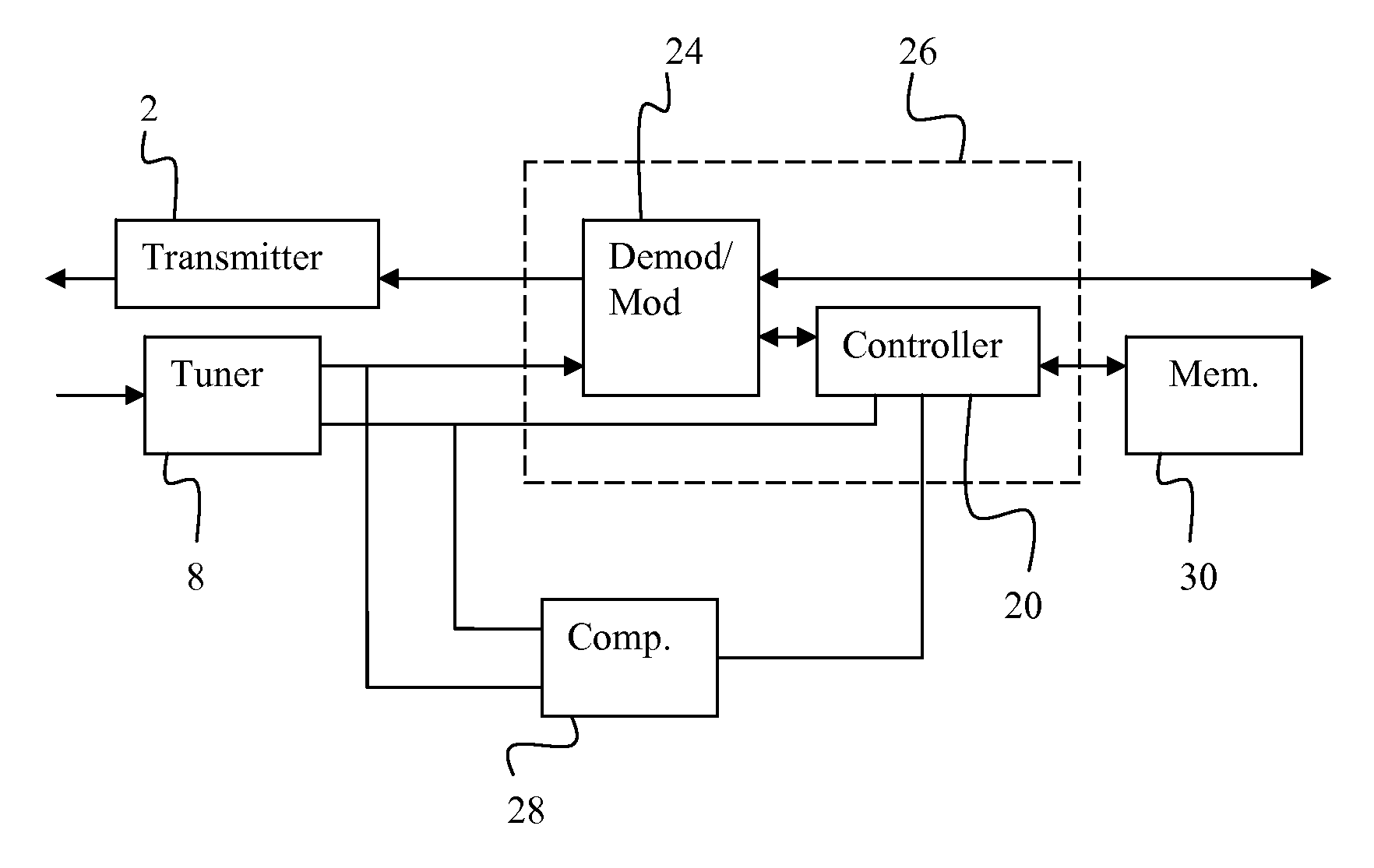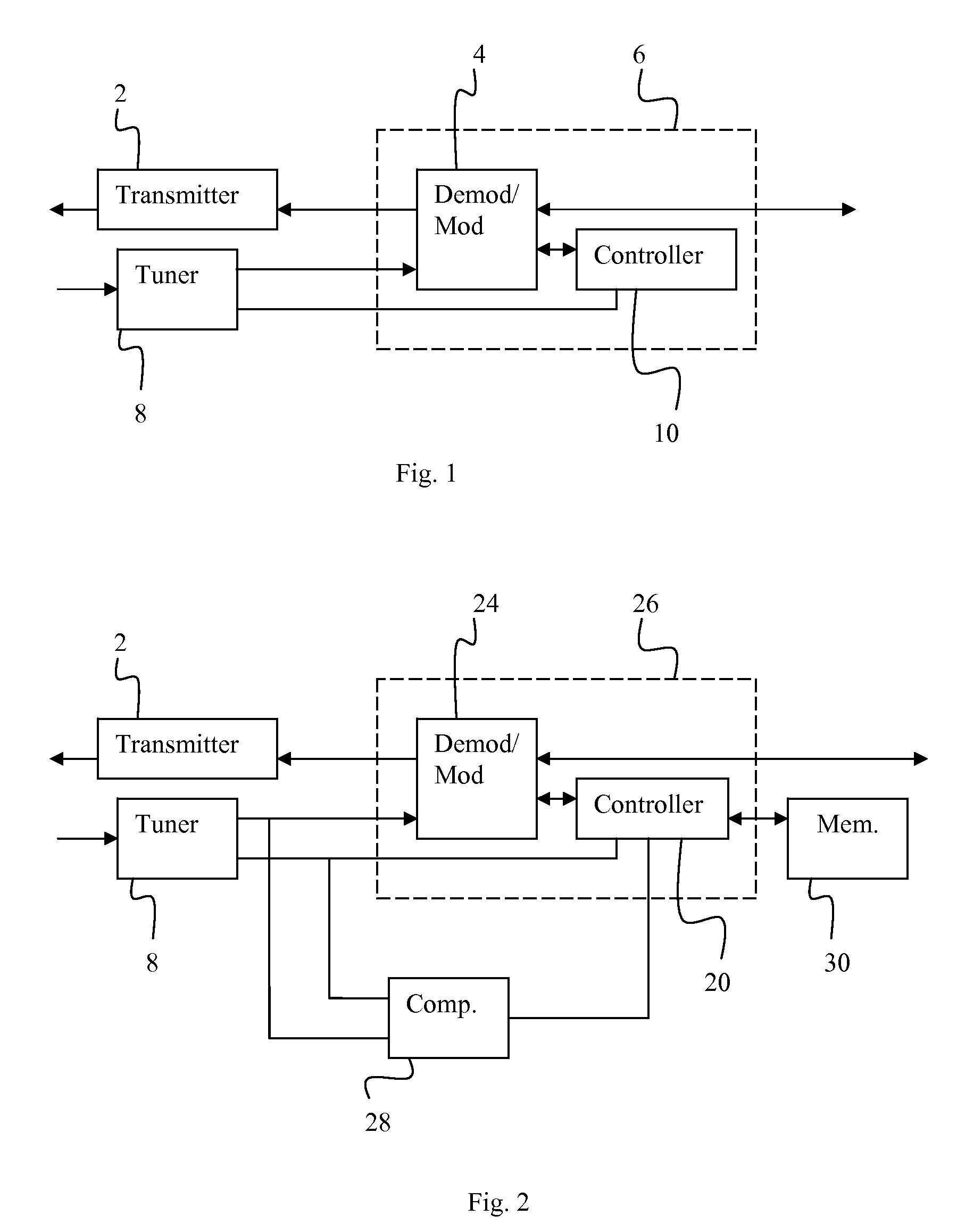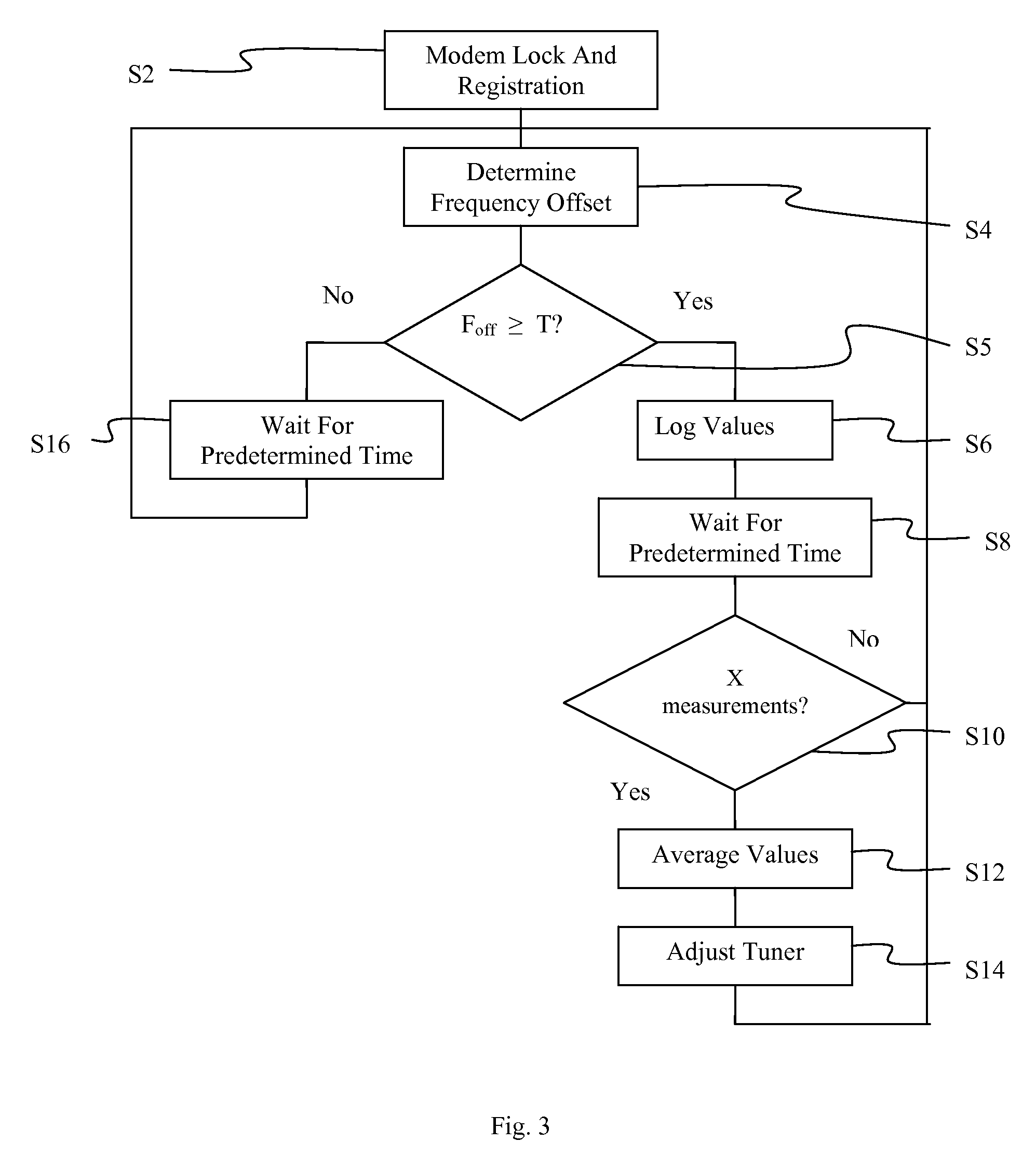Adaptive Tuning To Improve Demodulator Performance
a demodulator and adaptive tuning technology, applied in the direction of automatic frequency control details, resonant circuit details, electrical characteristics varying frequency control, etc., can solve the problems of reducing the communication speed and data communication speed of the user, reducing the accuracy of data receiving, and reducing the error rate of receiving data. , to achieve the effect of preventing frequency drift, reducing error rate and reducing error ra
- Summary
- Abstract
- Description
- Claims
- Application Information
AI Technical Summary
Benefits of technology
Problems solved by technology
Method used
Image
Examples
Embodiment Construction
[0017]The present invention improves performance of a network element, such as a modem, set top box (STB), or media terminal adapter (MTA) unit, by ensuring that the receiver in the network element receives communications on the transmitted frequency of a network operator. The present invention determines the frequency offset between the frequency on which the receiver has locked and the intended frequency being transmitted by the operator. The difference in the frequency offset is reduced to be below a predetermined value. The frequency offset is continuously monitored to correct for offset due to drift in circuit components such as a crystal oscillator in the receiver.
[0018]Several basic components of a conventional receiver are illustrated in FIG. 1. As illustrated in FIG. 1, a tuner 8 receives a downstream signal from a network, such as from a headend of a CATV network. In the installation of the network element on the network, or turning on the power of the network element, the...
PUM
 Login to View More
Login to View More Abstract
Description
Claims
Application Information
 Login to View More
Login to View More - R&D
- Intellectual Property
- Life Sciences
- Materials
- Tech Scout
- Unparalleled Data Quality
- Higher Quality Content
- 60% Fewer Hallucinations
Browse by: Latest US Patents, China's latest patents, Technical Efficacy Thesaurus, Application Domain, Technology Topic, Popular Technical Reports.
© 2025 PatSnap. All rights reserved.Legal|Privacy policy|Modern Slavery Act Transparency Statement|Sitemap|About US| Contact US: help@patsnap.com



